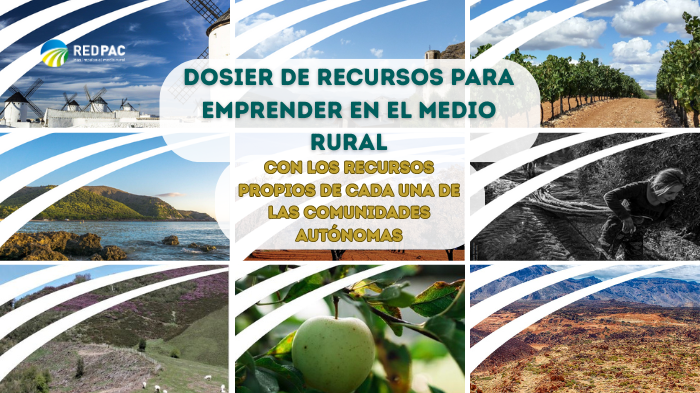
14 de July de 2025
In total, there are 18 dossiers with resources to undertake in rural areas: one dossier for each autonomous community (17) plus another at the national level.
In total, there are 18 dossiers with resources to undertake in rural areas: one dossier for each autonomous community (17) plus another at the national level.
The dossiers compile the available resources, both public and private.
On October 22, 2021, the defunct National Rural Network (RRN)—now the PAC Network following the integration of the two pillars, rural and agricultural, into CAP 23-27 —presented, through a virtual conference , the "dossiers of resources available for rural entrepreneurship in each autonomous community and at the state level." A total of 18 dossiers compile the available resources, both public and private, for entrepreneurship in rural areas in each autonomous community and at the national level.
The objective of these dossiers is to offer an advisory and guidance guide on resources to support entrepreneurship in rural areas through mentoring, training, or financing. This work was carried out by the PAC Network's Territorial Antennas , which searched and located the resources in the first edition. Now, four years after the dossiers have been in existence, they have been fully updated.
Methodology
To prepare and update the 18 dossiers , the Territorial Antennas conducted a search, contacting various local stakeholders to compile the resources of the regions. They also conducted online research and analyzed the information provided by the entities and organizations on their websites, which had to be extensively updated.
In order to gain the perspective of those stakeholders particularly involved in entrepreneurship, a selection of these sources was made, and an average of two to seven interviews were conducted per autonomous community. The regional stakeholders interviewed were primarily management authorities, Local Action Groups (LAGs), regional LAG networks, universities, provincial councils, youth associations, and public agricultural, employment, and economic entities.
The objective pursued in each of these interviews has been to identify the maximum possible resources in the region, and unify them .
Finally, practical and informative guides have been created that provide a first look at the entrepreneurship resources found, and invite the reader to delve deeper into each of the updated resources.
Thus, it is recommended that the resources described at the regional level be expanded with the dossier at the national level.











